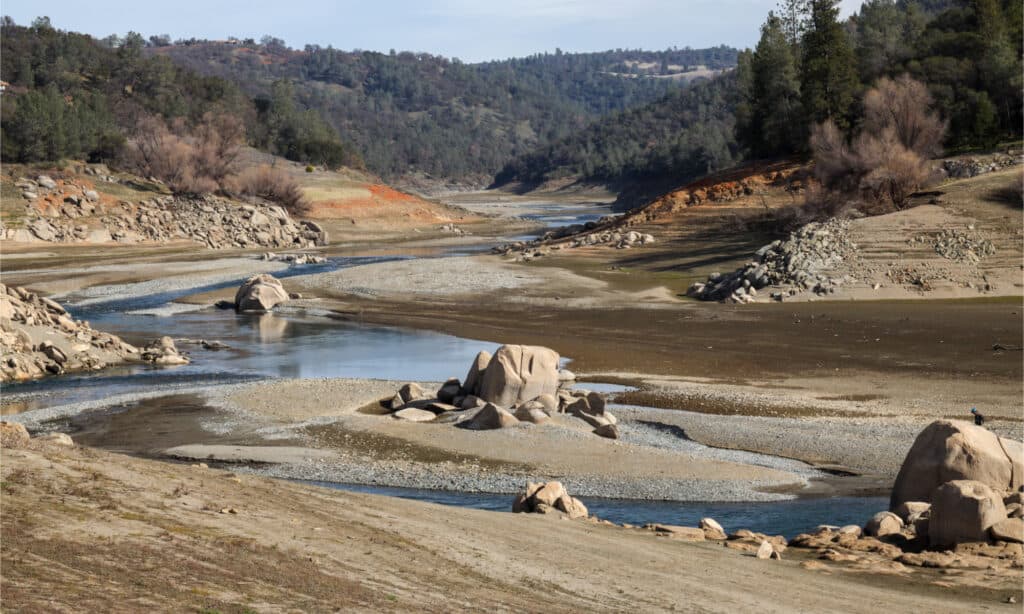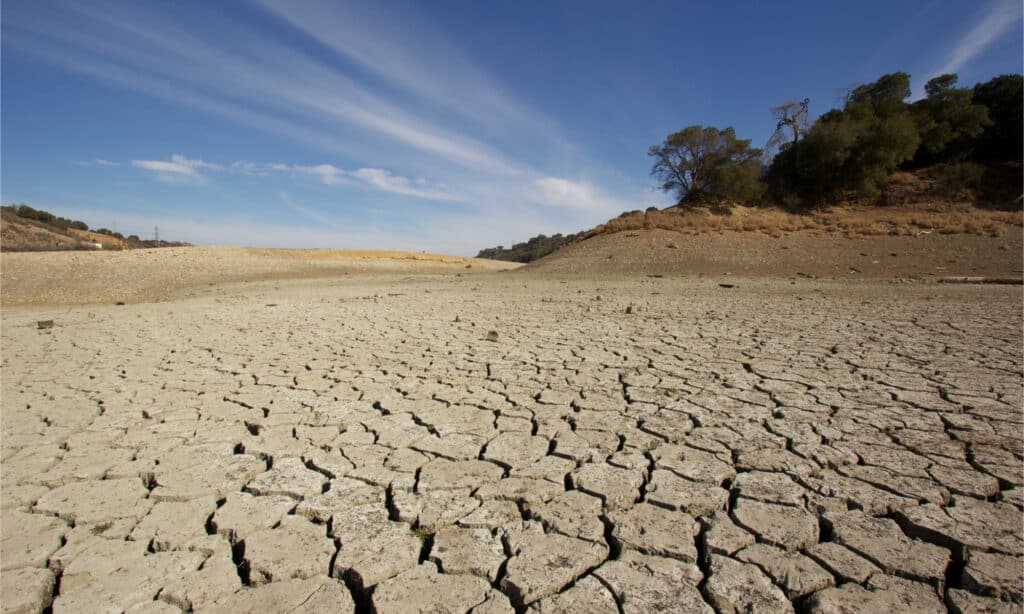If you are in California, you are probably rechecking your home temperature, cranking up your AC’s, and looking for ways to adjust to the recent surge of heat waves. Recent heat waves and water shortages are not isolated events. Rather, they are part of the unpleasant phenomenon known as a drought.
Drought refers to when snow, rain, or sleet does not fall at the required period increasing the temperature in an area.
In this article, we will examine if the state of California is in a drought, what drought level California is going through, the main causes of the drought, and possible solutions to the drought in California.
Is California in a Drought? (How Long has the Drought Lasted?)

Nearly all of California is in a drought.
©Lisa Parsons/Shutterstock.com
California is in a drought, and last year’s drought season was recorded as the worst in about 126 years of any form of record drought in the state.
At this point, 100 percent of the state is under D0-D1 drought conditions. If this sounds strange to you, there are various levels of drought, and the higher the level, the higher the intensity. The levels range from D0 to D4.
D0 indicates an abnormally dry atmosphere or short-term dryness; here, there is an average fire risk.
D1 stands for “moderate drought.”
D2 stands for severe drought; here, you notice serious water shortages.
D3 indicates extreme drought; there are severe risks of fire outbreaks at this level.
D4 indicates exceptional droughts, there would be water emergencies at this level, and extreme risks of fire outbreaks.
If the current condition persists, there could be an increase in drought levels, and this would spell danger for the state of California.
Does California Have a History of Droughts?

There have been 14 different droughts in California since 1841.
©Jake Osborne/Shutterstock.com
California has had quite a history of droughts over the years; some have been for short periods while others have lasted for years. This frequent romance with drought results from a bit of rainfall or snowfall during the wet seasons in the state. During an average year, California has delicate seasonal weather, and any shift could result in a drought.
Some of these droughts have had a lasting impact on the state.
There have been 14 different droughts in the state since 1841, the one in 1841 being the shortest.
In 2000, the US drought monitor was created. It aimed to collect and monitor data on droughts across the states of America. California quickly drew the nation’s attention as it entered into its most prolonged drought period. This drought lasted 376 weeks, starting on the 27th of December, 2011 and ending on the 5th of March, 2019.
Some notable droughts include:
Heavy floods which preceded the 1863 – 1864 drought.
The 1922 – 1926 drought drove farmers to begin irrigating their fields as a more sustainable means of getting water for farming.
The 1986 – 1972 which was the longest drought till then. California wasn’t the only state affected by the drought, and it is believed the eruption of Mount Pinatubo in June 1991 might have caused heavy rainfall afterward.
What are the Leading Causes of the California Drought?

California depends on heavy rains during its season, and a lack of these rains would invariably result in a massive reduction in water.
©iStock.com/Jason Johnson
As we have mentioned before, the balance of the Californian weather condition is quite delicate, and a slight tilt could set the state on a course of D2 level drought.
California depends on heavy rains during its season, and a lack of these rains would invariably result in a massive reduction in water and atmospheric moisture. The series of storms and rain that broke the longest drought in 2019 has reduced both numbers and intensity. Weather experts believe this resulted from a high-pressure ridge of air along the state’s coastlines which has been diverting massive storms northward. A similar high-pressure ridge of air between 2012 and 2016 was dubbed the “the ridiculously resilient ridge,” and many experts think this ridge is back.
The effects of climate change can also be felt here as scientists are still looking into how climate change could cause the frequency of the resilient ridge. Furthermore, global warming has made California much more susceptible to droughts. This simply means that the planet is hotter than it was 50 years ago. As a result, the same amount of rain from 50 years ago now would evaporate faster.
How Does the California Drought Affect its Vegetation and Wildlife?
Droughts are never good for the plant life ecosystem. Plants require water to survive, and many forests in California are gradually dwindling due to the lack of water. The threats of wildfires also endanger wildlife in the state. Various marshes are drying up, severely altering the habitats of fishes and other water creatures such as the Shoshone pupfish.
The loss of trees from droughts damages some small mammals’ living areas. Small animals like rabbits and mice lose the cover and protection the forest floor and tree canopies offer from predators. While it might seem like bigger animals might enjoy more meals during this period, they have less to drink, and bears would be forced to share watering holes with other predators. This could increase clashes between big predators.
Are there Possible Solutions to the Drought in California?
California has built one of the largest cities in the world and has sustained its inhabitants so far. To maintain this, regulations regarding water desalination, deep irrigation, and wastewater recycling have to be encouraged. To solve the drought problem in California for people, provisions regarding water supply have to be attended to.
If the drought persists without any intervention, California might be in for tough months ahead.
The photo featured at the top of this post is © Jake Osborne/Shutterstock.com
Thank you for reading! Have some feedback for us? Contact the AZ Animals editorial team.







